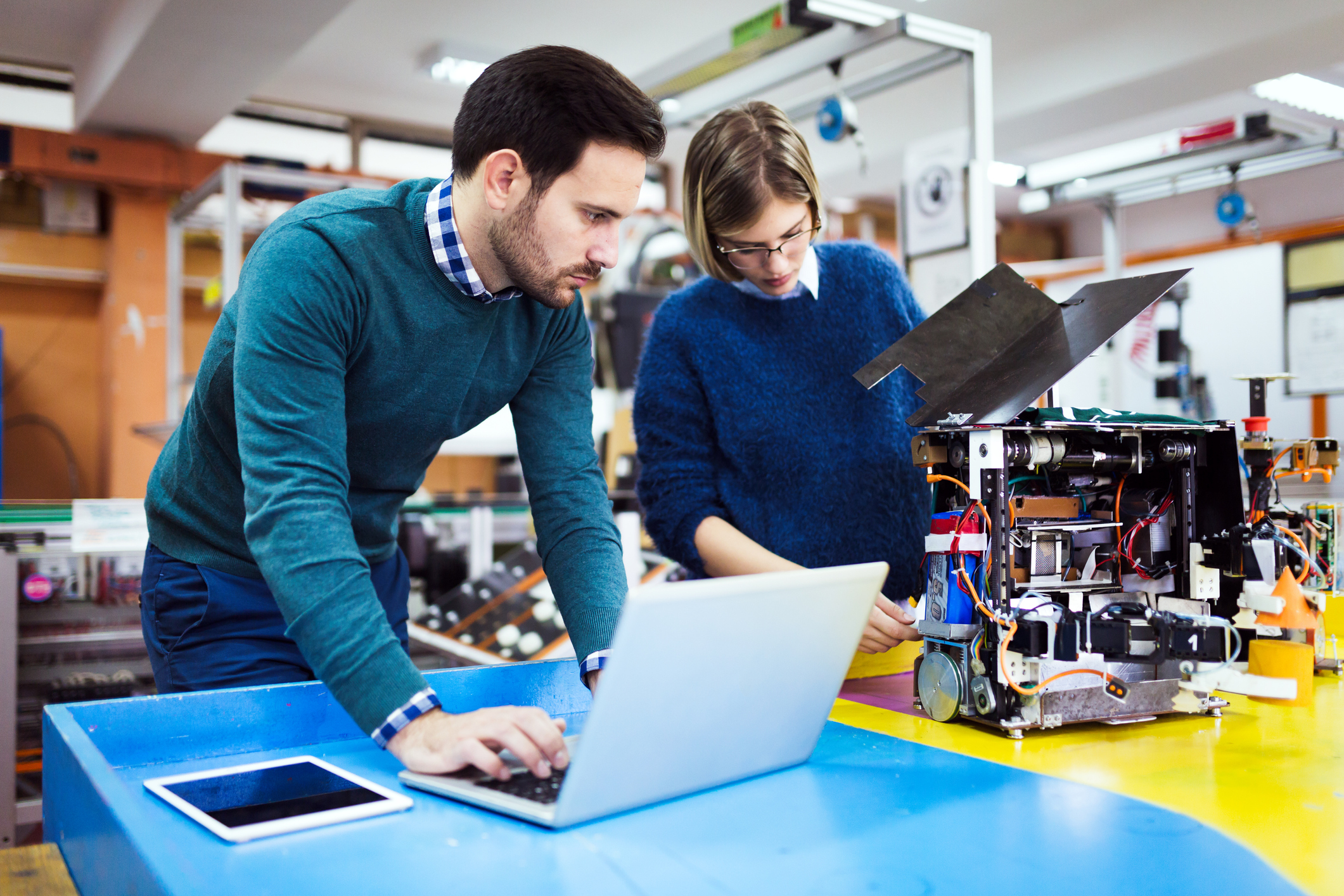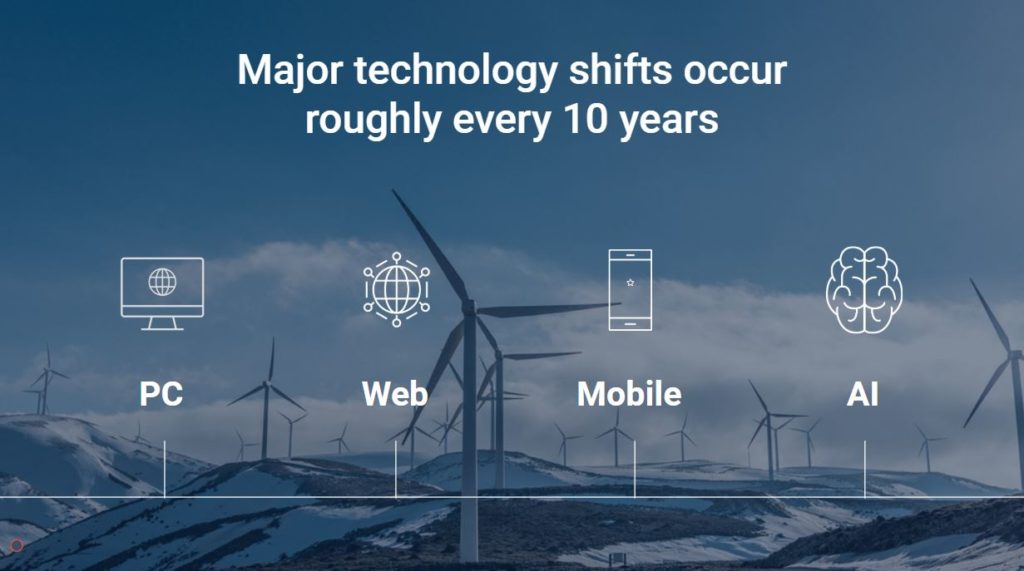
10-Year Technology Shifts and How They’re Changing the World
Four modern technological advancements have reshaped the world, human connectivity, globalization, and consumerism. Major trends tend to rise in 10-year cycles, with a decade of focus and a burst of creativity and advancement. From the personal computer, internet, and mobile devices to artificial intelligence, the last 40 years have seen incredible shifts in new technology. How we have embraced and adapted to these shifts have changed the world. Many experts agree that the greatest impact is yet to come, thanks to how artificial intelligence is now involved with daily life.

1980s: The Personal Computer
The first portable personal computers were introduced commercially in 1975 and came as kits with an assembled motherboard. Over the next several years, the industry added the first word processing programs and floppy disc drive, in addition to advancements in software, memory, and operating systems. Following 1981’s launch of IBM’s PC, Time Magazine called 1982 “The Year of the Computer”. By 1983, it was estimated that 10 millions PCs were in use in the U.S. This was a significant increase from 1 million just three years prior.
The rise and popularity of the personal computer first revolutionized the business world with the automation of information and bookkeeping, not to mention the fact that it had the power to multitask like no other machine before it. Store massive amounts of information, simplify tasks, organize work, and communicate around the world – the PC brought forth all of this, almost from the beginning. It was also the impetus to globalization and changed how we could interact with the world.
1990s: The Internet
Coupled with the rise of the personal computer, the Internet has drastically changed daily life — politically, socially, and economically. The internet didn’t just change how we communicate with the world, it has changed how we gather information, learn, maintain relationships, and even how our brains function. More recently, the inception and acceptance of social media started an age of constant contact and constant documentation of daily life, from the mundane to the most intimate.
In 1969, computers at Stanford and UCLA were connected by Arpanet, the first network to establish a virtual link. A year later, Arpanet was established between Harvard, MIT, and BBN (the company that created the “interface message processor” computers used to connect the network). The 1970s and 80s saw the first email, PC modem, virtual communities, and TCP/IP protocols. With the launch of AOL in 1989, the Internet finally started to make its way into the average home, followed by early web browsers, webmail services, and file sharing. Since then, every year from the mid 1990s to now has seen increased advancements in how the Internet connects and reshapes society.
2000s: Mobile Devices
Speaking of ways technology has reshaped how we connect with others – mobile devices have made news, information, people, and a worldwide marketplace always available. This is a dramatic shift from the first mobile phone call in 1973 between engineers (and competitors) from Motorola to Bell Labs. Since then, mobile devices have become just that – more mobile – sleeker, lighter, and smaller.
The launch of Apple’s first iPhone in 2007 was truly the beginning of mobile technology as we know it now because it had the first touch screen and web connectivity. It is considered by some to be wholly responsible for renewing the interest in mobile web applications and design after 2000’s dot-com burst. In 2018, there were over five billion mobile devices in use around the world, and half of them were smartphones or tablets. Adults spend an average of three and a half hours a day on their mobile devices, and other age groups may spend considerably more.
2010s: Artificial Intelligence
The intellectual roots of AI, and the concept of intelligent machines, goes back as far as Greek mythology. However, it was not until modern computers were invented shortly after World War II that it was possible to create programs to perform difficult intellectual tasks. As advancements in AI and computation in general exploded from the 1970s to early 2000s, we began to see how AI could make the greatest technological impact that we’ve yet to experience.
The early 2000’s brought interactive robot pets, sociable machines (robots with a face that expresses emotions), autonomous vehicles, and more. In 2018 alone, there were numerous breakthrough technologies that pushed the envelope further and further, including dueling neural networks, artificial embryos, and AI in the cloud. The internet of “physical” things continues to reshape globalization, work, and recreation. The general conclusion from experts is that AI will enhance and augment every aspect of the human experience – from your role at work to relationships and automobiles.
The Future: Partnering with G5 to Capture AI Innovations
G5 has been an innovation leader on the forefront of AI-powered technology for marketers since it was founded in 2005. We develop end-to-end predictive marketing SaaS technology that amplifies the impact of real estate marketers seeking high net operating income. To stay in touch and see how we put technology and AI to work for our clients, subscribe to our blog.
Get News, Articles & Updates in Your Inbox
Thank You for Your Interest
We will be in contact soon and look forward to learning more about you and your company. Based on your marketing challenges, we’ll discuss increasing visibility into your analytics and how to generate more and better leads so you can achieve your marketing goals.
In the meantime, we invite you to check out our checklist on website accessibility. Use this checklist to start assessing the baseline accessibility of your website.
Enjoy! We’ll be in touch very soon.
